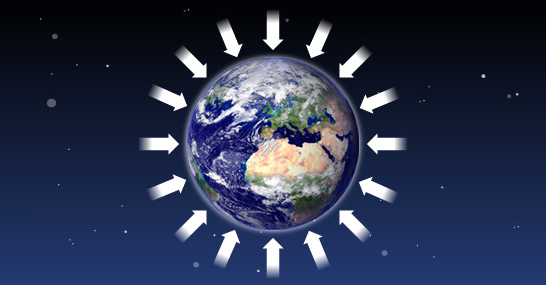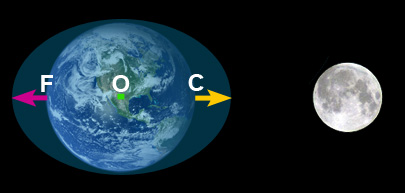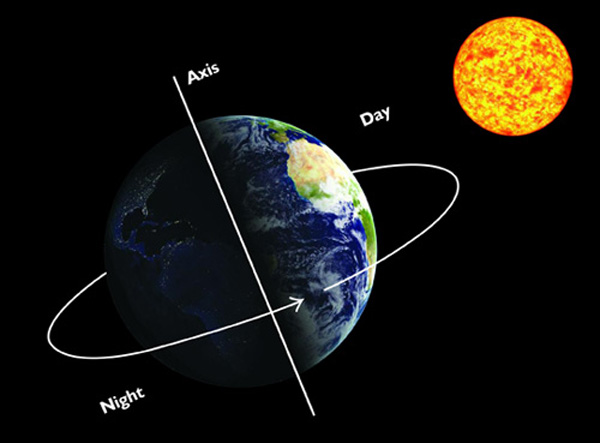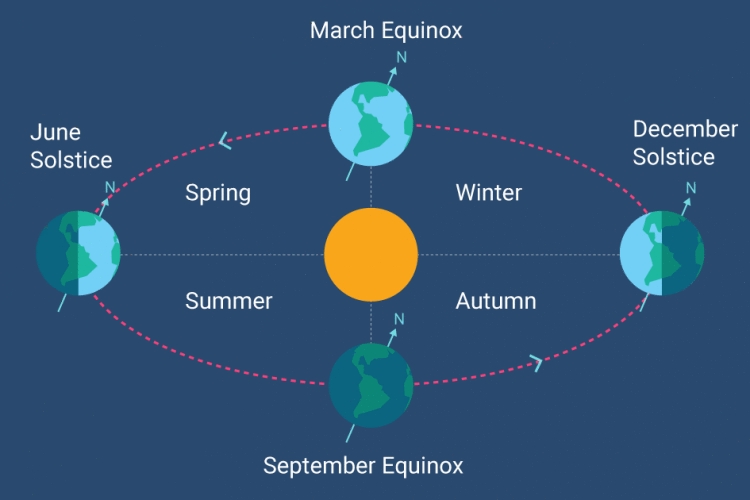Know Curious Facts about Mother Earth

WHY IS OUR EARTH SPHERICAL AND WHY IS IT’S ROTATION IMPORTANT?
Since childhood we’ve been taught that the planets in our solar system are round or spherical in shape, and not flat. What’s more spectacular is that they are not stationery or motionless. Instead, they‘ll keep spinning on their axis. But why? We never question these theories and that is the reason why we do not know the logic behind them. So it’s high time that we explore something more about our wondrous universe and learn why the planets in our solar system are spherical and why our planet’s rotation is important to us.

Contents
Why is our Earth spherical?
Here’s a simple answer to the above question – Gravity. Planet’s are round because of the force of gravity. Now you must be wondering how exactly gravity plays a role in shaping our planet right? So let me explain you in detail how gravity is the reason behind the spherical nature of the planets. Gravity acts as if it originates from the center of the planet and pulls each point of the planet towards it. This is called as the gravitational pull or gravitational force of the planet. Because of this gravitational pull, we are all perfectly held on the surface of the Earth. Otherwise, we’d all be simply floating in the space like aliens. But thanks to gravity, which pulls all sides of our planet towards it. Hence, the only way for everything on the surface to be at the equi-distance from the center is by forming a round shape.
However, planets are not exactly round. They are roughly spherical, that is they are not perfect spheres. This is because planets spin on their axis. When planets spin, things near the equator tend to move away due to centrifugal force. Centrifugal force is also called an outward force. When Earth rotates, it exerts a force that is directed away from the center. This is called as centrifugal force. Because of this force, the Earth appears to be bulging at the equator. This phenomenon is also called as equatorial buldge. Because of this buldge, the equator of the planet become farthest from it centre than its poles, resulting in a roughly spherical planet. Saturn buldge’s the most of all the planets in our solar system, whereas mercury and Venus buldge’s the least.

Activity
Here’s an activity that’ll help you to better understand how centrifugal force works and why equatorial buldge takes place.
Materials Required:
- Rope
- 3 plastic cups
- Thin square board
- Water
- Square sheet of rubber
Method:
- Drill a hole large enough for the rope in each corner of the board.
- Glue the thin sheet of rubber to one side of the board.
- Tie the center of two even lengths of ropes together.
- Pull one strand of rope through each hole and tie the ends.
- Hold up the board to make sure the ropes are even.
- Place 3 cups in the center of the board.
- Fill the cups with water.
- Slowly begin swinging the board and when you’re ready swing it in full circle.
Observation:
You may see that an invisible force keeps the cups from falling off. This force is centrifugal force. It is an apparent force that draws a rotating object from the center of rotation. Thus holding the water inside the cups while it swings in full circle. As we swing the cups of water in an arc, i.e., in full circle, the water wants to continue travelling in a straight line, but our rope constantly redirects the water so it travels in arc instead, thus preventing it from spilling on the ground.
Why Earth’s Rotation is Important?
Now that we know why our planet, that is Earth spherical, let us learn why its rotation important to us. Have you ever wondered why do we have days and nights? Why does the Sun seem to be rising in the morning and setting in the evening? The days and nights happen because of the rotation of the Earth. Actually, the Sun always remains stationery. In fact, it the Earth that spins from west to east. As it spins, one side of it faces the Sun, hence experiencing day, whereas the other side faces away from the Sun, thus experiencing night. Therefore, for the perfect balance of the day and night, Earth’s rotation is important.

As the concept of day and night is clear, lets talk about why exactly do we a variety of have seasons. What actually causes them? Well here’s the reason- We all know that the Earth rotates on its axis. But while rotating it tilts on its axis. This tilting is very important. It is the reason why we have seasons. So to understand the concept of seasons lets imagine the Earth as being in two parts. The top part being the northern hemisphere, whereas the bottom part being the southern hemisphere. In January, southern hemisphere is tilted towards the Sun and northern hemisphere is tilted away from the Sun. As a result, the southern hemisphere receives more of the Sun’s heat as compared to the northern hemisphere. Thus, in January northern hemisphere experience winter, whereas southern hemisphere experiences summer. Similarly, in June, northern hemisphere experiences summer, whereas southern hemisphere experiences winter. During March and September, the Sun’s rays falls equally on northern and southern hemisphere. Thus, we experience spring and Autumn during that time.

Now we’ve learnt how different seasons occur, except rainy season. So here’s a quick challenge for you kids:
Find out why and how rainy season takes place?






Responses